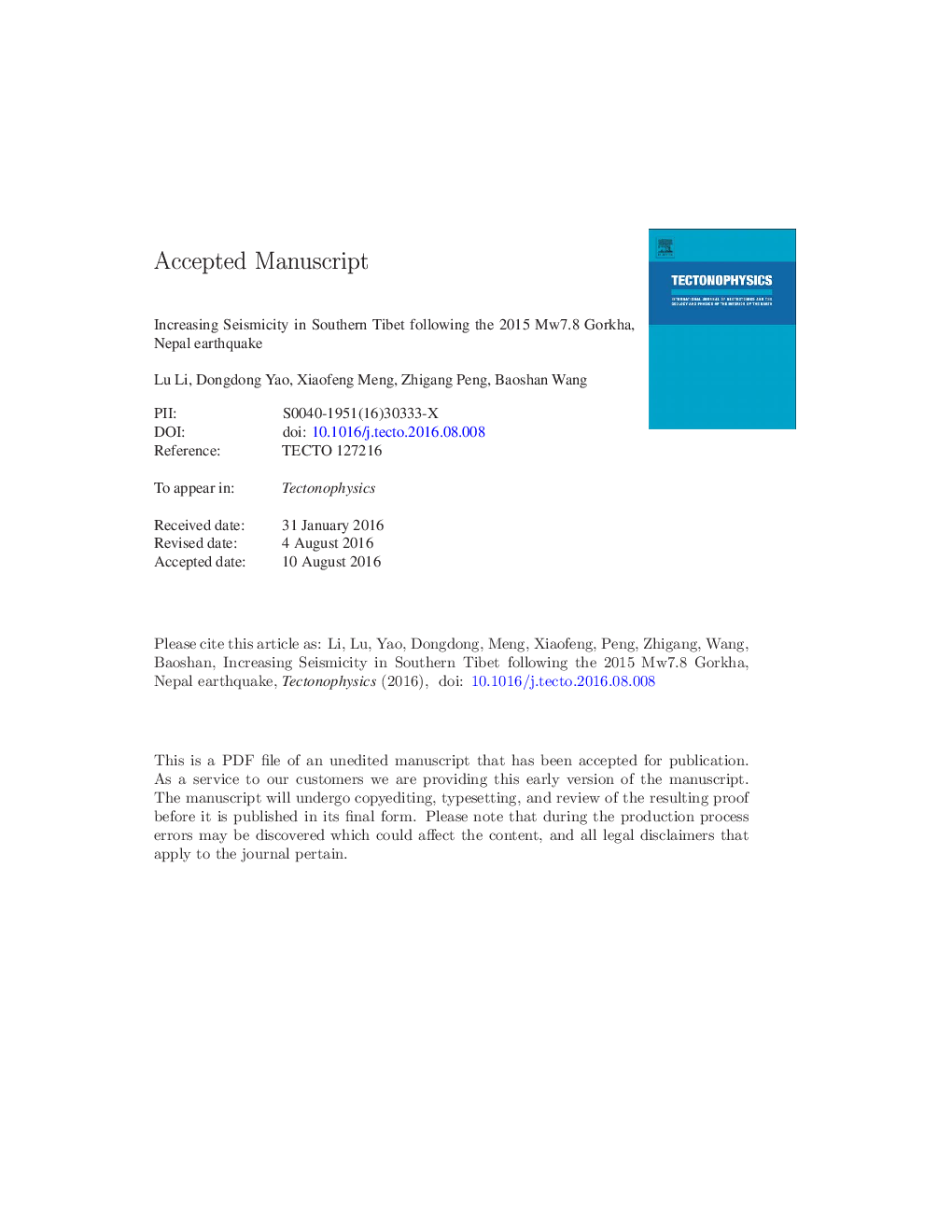| Article ID | Journal | Published Year | Pages | File Type |
|---|---|---|---|---|
| 5781609 | Tectonophysics | 2017 | 51 Pages |
Abstract
We conducted a systematic detection of micro-seismicity in Southern Tibet 1.6 days before and 4.4 days after the 2015 Mw 7.8 Gorkha, Nepal earthquake. Our study employs 368 template events listed in the China Earthquake Networks Center (CENC) catalog. With the waveform-based matched filter technique, we detected five times more earthquakes than listed in the CENC catalog during our study period. The seismicity in Southern Tibet shows a significant increase immediately following the Gorkha, Nepal earthquake, including two normal-faulting events (the Mw 5.8 Tingri and Mw 5.3 Nyalam earthquakes) about 3 and 11 h after the mainshock, respectively. Although the static stress changes ÎCFS showed a slightly better correlation with the seismicity rate changes than the peak dynamic stress changes ÎCFS(t), the absolute value of the static stress change at the epicenter region of the Mw 5.8 Tingri earthquake is ~ 10 kPa, roughly two orders smaller than the peak dynamic stress change of 2.2 MPa. Although we are unable to identify the primary triggering mechanism, it is evident that the 2015 Nepal earthquake triggered widespread seismicity in Southern Tibet. Our results highlight the potential increase of seismic hazard in Southern Tibet due to the occurrence of major thrust earthquakes along the Himalaya frontal thrust faults.
Keywords
Related Topics
Physical Sciences and Engineering
Earth and Planetary Sciences
Earth-Surface Processes
Authors
Lu Li, Dongdong Yao, Xiaofeng Meng, Zhigang Peng, Baoshan Wang,
